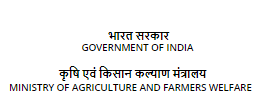Timer-based power operated prototype water filtration system for aquaculture
Background:
Aquaculture industry is processing quickly over the past few decades. This rapid growth has
resulted in competition for natural resources i.e. land and water. Apart from strong annual
growth, the culture of fish over the past few decades has also been strongly intensified. This
intensification has significant drawbacks such as an increased environmental impact due to larger
amount of waste discharged in the form of effluent. Aquaculture, like other animal‐production
sector generates biological wastes but unlike other sectors, the aquatic animals cannot separate
their living space from their area of excretion. This causes deterioration in water quality due to
ammonical excretion inside the aquaculture production system leading to poor growth and an
increase in the incidences of diseases.
Management of the waste generated from aquaculture is quite difficult and costly as the waste
disintegrated becomes diluted in the culture water. Treatment of wastewater demands large
investment and sophisticated equipment.
Feed is the main source of waste and is also responsible for most of the environmental impact of
aquaculture, and water quality is a critical factor when culturing any aquatic organism. Optimal
water quality varies by species and must be monitored to ensure growth and survival. The quality
of water in aquaculture production systems can significantly affect the organism’s health and the
costs associated. Therefore, removal of particles from water flow is important in aquaculture.
Suspended solids, dissolved solids, and organic matter are removed from water by filtration of
water through suitable media. In aquaculture, mechanical filtration is used primarily for the
separation of solids and liquids. Concentration of ammonia in culture water is reduced by
biological filtration process. Biological filters are devices to culture microorganism that will
perform the given task of reducing the ammonia concentration when water with high ammonia
level flows through them. In water, both Ammonia (NH3) and ammonium ion (NH4
+
) are present
and their sum is known as Total Ammonia Nitrogen (TAN) and their proportions vary with pH.
Ammonia (NH3) is toxic to fish and its presence in water is important in aquaculture practices.
Biological filters (biofilters) are used to maintain water quality in recirculating or closed
aquaculture systems. Biofilters are also used to improve the water quality before water is
discharged from a facility. In biological filters, bacteria are used to convert ammonia in various
steps (i) Conversion of ammonium to Nitrite (ii) conversion of Nitrite to Nitrate, and (iii)
Conversion of nitrate to molecular nitrogen (denitrification). The first two steps, known as
nitrification, are performed by specific bacteria which oxidize ammonia and nitrite. The autotrophic bacteria, nitrosomonas bacteria utilize ammonia as a food source and produce
nitrite. This nitrite is further converted to nitrate by nitrobacter. These bacteria grow and colonize
on the filter medium of biological filter. Both types of nitrifying bacteria will grow and colonize
the biofilter as long as food is available. The efficiency of the nitrification process depends on the
optimum growth of bacteria on the biofilter medium. One of the main factors affecting the
bacterial growth is the amount ammonia in the water. Therefore, it is very much essential to
develop a Biological Filter (biofilter) for better water quality and environment of aquaculture
systems.
In consideration with market potential for biofilter, ICAR-CIFE has developed a prototype of
timer-based and power operated water filtration system for aquaculture which can be used in
aquarium as well as for intensive aquaculture system. This filter will improve the water quality
of the system so that growth of the fish can be better as compared to water exchange system
aquaculture. In addition to this, huge water and labour cost for exchanging water can also be
saved.
Technology Details:
The prototype of biofilter consists of outer (150 mm dia.) and inner casing (75 mm dia.) made up
of PVC pipes. The outer casing is fabricated using 2 pieces of detachable perforated PVC pipes.
The detachable upper and lower portions of outer casing are clubbed together with the help of
PVC coupler socket. This arrangement provides ease in detaching the upper and lower portions
for regular inspection and maintenance of biofilter. The surface of outer casing is perforated. The
inner casing which holds suitable biofilter media (viz. bio-rings, bio-balls etc.) is fabricated with
perforated PVC pipe of 75 mm dia. The surface of inner casing has perforations with holes of 15
mm dia. The space between the inner and outer casing is filled-up with cotton foam sponge which
acts as a mechanical filter to prevent the entry of suspended solids into the system. At the top of
the inner casing, a cone shaped perforated cup (75 mm dia.) is provided to prevent the entry of
bio-rings (i.e. biofilter media) into the pump. The inner and outer casings are covered at the
bottom and top with PVC end caps to make one unit of prototype of overall height 45 cm. A stand
is provided the bottom to support the prototype to stand stable in the water body. A submersible
pump is mounted on the top of the top end cap. The submersible pump is facilitated with a timer
and contactor for recirculation of water at predetermined rate of water exchange at regular
intervals of time


